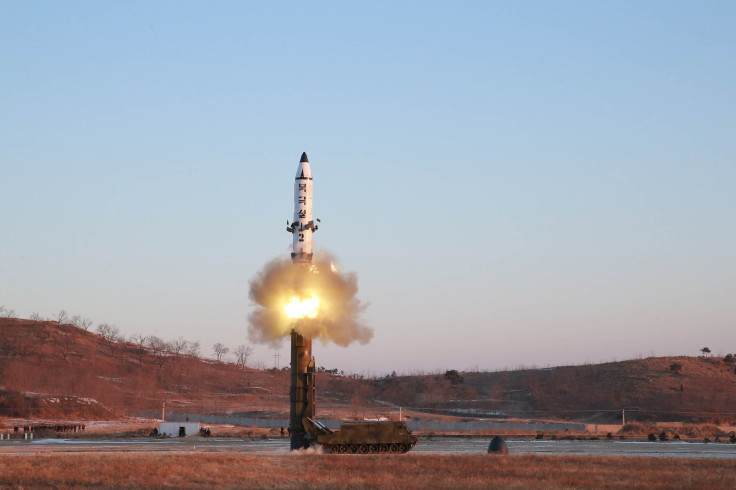Hawaii Prepares For North Korea Nuclear Attack, Tells Citizens How To Survive

Hawaiian officials are taking seriously the possibility of an impending nuclear attack by North Korea — and educating citizens about what to do if one does occur. The Hawaii Emergency Management Agency began an educational campaign Friday to help its residents figure out what to do in the event of an attack.
While officials said an attack is not likely, they want to be prepared.
“We need to tell the public what the state is doing,” Vern Miyagi, administrator of the emergency management agency, told Hawaii News Now Thursday. “We do not want to cause any undue stress for the public. However, we have a responsibility to plan for all hazards.”
Read: Japan Tells Citizens How To Prepare For Nuclear Attack By North Korea
The contingency plan is centered around a 15-kiloton nuclear missile being detonated 1,000 feet above Honolulu. The public would have about eight to 12 minutes to prepare for such an attack, at which point a public service announcement would tell residents to “get inside, stay inside and stay tuned.” The state said it planned to test a new emergency siren next month.
Are You Ready? Are You Prepared? Administrator Vern Miyagi talking about 14 days of emergency supplies. #hawaiiema pic.twitter.com/nkkgWIvRVW
— Hawaii EMA (@Hawaii_EMA) July 18, 2017
“We don’t know the exact capabilities or intentions of the North Korean government, but there is clear evidence that it is trying to develop ballistic missiles that could conceivably one day reach our state,” Miyagi said. “Therefore, we cannot wait to begin our public information campaign to ensure that Hawaii residents will know what to do if such an event occurs.”
North Korea said it successfully fired an intercontinental ballistic missile (ICBM) on the Fourth of July. United States officials confirmed the launch, though much still remained unknown about the nation’s nuclear capabilities. Vice Chairman of the U.S. Joint Chiefs of Staff General Paul Selva said Tuesday North Korea likely does not have the capability to target the U.S. in any meaningful way.
“I…am not sanguine that the test on the Fourth of July demonstrates that they have the capacity to strike the United States with any degree of accuracy or reasonable confidence,” Selva told the Senate Armed Services Committee Tuesday.
Still, Hawaii is joining other places around the world in preparing for a worst case scenario. California started rolling out its own educational campaign in April about what to do in the event of a nuclear missile launch. Japan has also begun informing citizens of how to protect themselves: The nation issued a 30-second television broadcast in June advising citizens to take shelter, hide behind objects, protect their heads and lie face down on the floor should North Korea launch a missile. Japan would have even less time than Hawaii to prepare for an attack.
Read: Can North Korea’s Nuclear Missiles Reach The United States?
“Under the current stringent circumstances, we will maintain a high level of alert and take all possible measures,” Japanese Prime Minister Shinzo Abe said in April at a House of Representatives meeting. “Through close cooperation with the United States, South Korea, China and Russia, Japan will strongly demand North Korea refrain from provocative acts and abandon its nuclear and missile programs.”

© Copyright IBTimes 2025. All rights reserved.






















